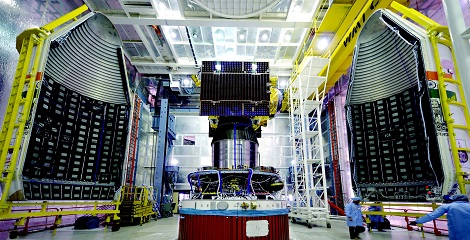Indian Space Research Organisation (ISRO) launched PSLV-C31 rocket successfully, carrying 5th satellite (out of 7) of India Regional Navigation Satellite System (IRNSS), the IRNSS-1E from Satish Dhawan Space Centre (SDSC), Sriharikota, near Chennai,
- PSLV-C31 for the 11th time used “XL” version of PSLV.
- This was Polar Satellite Launch Vehicle’s 33rd flight ((PSLV-C31).
- This is also the ISRO’s 50th orbital launch with the PSLV deploying the IRNSS navigation satellite into geosynchronous transfer orbit.

The IRNSS is designed to use 7 satellites in geosynchronous orbits, enabling India to have a satellite navigation system that is not reliant on other countries’ space technology. IRNSS 1E, add on to four regional navigational satellites (IRNSS-1A, 1B, 1C and ID).
- Benefits of navigation system – It is useful in disaster management, vehicle tracking, fleet management, integration with mobile phones, mapping and geodetic data capture, visual and voice navigation for drivers and others.
- Types of payloads – IRNSS-1E carries navigation payload and ranging payload.
- Ranging payload – IRNSS-1E consists of a C-band transponder which facilitates accurate determination of the range of the satellite.
- Laser ranging – IRNSS-1E also carries Corner Cube Retro Reflectors for laser ranging.
About Polar Satellite Launch Vehicle (PSLV):
PSLV is an expendable launch system developed and operated by the Indian Space Research Organisation (ISRO).
- It was developed to allow India to launch its Indian Remote Sensing (IRS) satellites into Sun synchronous orbits.
- In the year 2015 alone India successfully launched 17 foreign satellites belonging to Canada, Indonesia, Singapore, the UK and the United States.
AffairsCloud Recommends Oliveboard Mock Test
AffairsCloud Ebook - Support Us to Grow
Govt Jobs by Category
Bank Jobs Notification